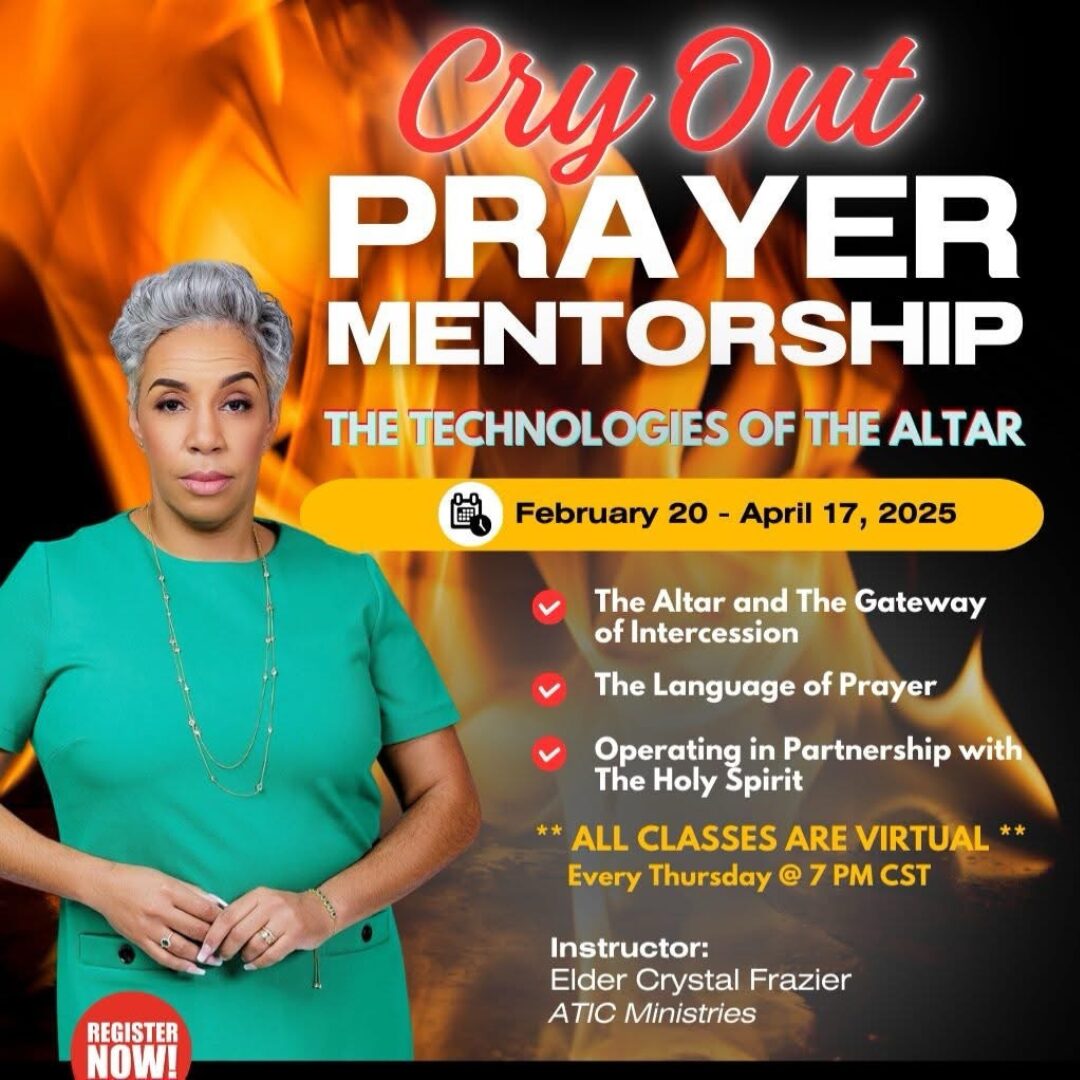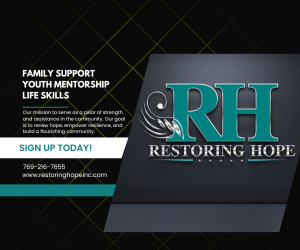This week on Viewpoints. We’re supposed to handle everything from stop, drop, and roll, to citizenship, to drug abuse. It’s a brand new school year.
We speak with two educators about some of the big challenges they’re facing. Then. There’s a lot more quirkiness and weirdness to their outlooks and music and all of that stuff.
It doesn’t feel like when we had like a Britney, it felt like she had to be like the pop star. We cover the fast-moving world of pop today. I’m Marty Peterson.
And I’m Gary Price. These stories in-depth this week on your public affairs magazine, Viewpoints. $5,000.
That’s the average amount of money people in the US are now spending on gas in a year. Five grand. That’s crazy.
If you drive, you have to download Upside, the free app that gives you cash back every time you get gas. That’s right. You can earn real cash back with Upside.
Just by buying the gas you’re already buying. You can literally start earning cash back today. I use Upside every time I fill up.
I’ve already made around two, $300. You’re putting gas in your car anyway. Why not get real cash back? If you like free money, download Upside.
I’m saving the cash I earn from using Upside to help pay for a vacation later this year. Download the free Upside app now to earn cash back every time you buy gas. Use promo code OWN to get an extra 25 cents per gallon on your first tank.
You can cash out any time right to your bank, PayPal, or a gift card for Amazon and other brands. Just download the free Upside app and use promo code OWN for a 25 cents per gallon bonus on your first tank. That’s code OWN for a 25 cents per gallon bonus.
The first day of school always starts the same way. In Lindsay’s classroom, a neat row of desks, a large stack of name tags, fresh supplies, and a tidy space to start off the new year. It’s a moment she and other teachers have been preparing for for weeks.
The quiet before the classroom fills with chatter, countless questions, and the constant energy only nine and 10-year-olds can bring. Lindsay is a fourth grade teacher at a public school in the Chicago suburbs. For this story, she’s not sharing her last name so she can speak openly while still maintaining her privacy.
Lindsay’s been an elementary school teacher for several years now and says that every class brings its own joys and surprises as well as challenges. Over the last few years, one of the biggest issues hasn’t been about lesson plans or standardized testing, but what students bring into the classroom. I want to say at least 50% of my students had an iPhone.
Some had like some lower version of a phone, but it was still a smartphone. And then I’d say the rest had Apple Watches of some kind. And I think only, honestly, maybe a handful of students had no access to any kind of smart technology at all during the day, which it was interesting.
I had a student one year who I was in the middle of teaching and he got up and started to walk away. And I was like, where are you going, my friend? And he was like, oh, my mom texted me to go tell my sister this. And I was like, oh, my friend, that I understand that the technology can be very convenient for communication and everything, but sometimes they do feel as though it’s distracting.
In her district, the rules are clear. Their phones stay off and out of sight during the day, but that doesn’t mean the influence of screens stops once school starts. What happens online, both after school and on weekends, often bleeds into learning.
And on social media, a conflict or an instance of bullying can head down a slippery slope very quickly. In a matter of minutes, a mean comment or a picture can be viewed, reshared, and commented on dozens of times. This commentary then makes its way into classroom chatter.
Social media and the iPhones is a problem. Like we had, there was those TikTok challenges or TikTok trends where kids were like stealing things from bathrooms. And we had a kid on camera steal the soap dispenser.
He got in a bunch of trouble. You know, the kids are just, I think, sometimes more focused on what would be funny, what would make their friends laugh, what would be like cool to post on social media, as opposed to sometimes, I mean, at the young age, they don’t understand the consequences of those actions. Even, you know, like Snapchat groups and all this stuff.
As an educator, Lindsay says it’s a delicate balance between reacting to what happens at school versus what happens at home. Teachers trying not to step on parents’ toes, but sometimes what happens online outside of the school day bleeds into the classroom. And that may warrant a larger conversation.
The one thing that stresses me out toward the beginning of the year is always, of course, the first phone call, first contact home. I always try to make positives so the parents know, you know, we’re on a team here to support your student. But the first time you have to call home because a student did something that requires a conversation between me and the guardian, you’re not sure what kind of support you’re gonna get from that phone call.
So that’s always, you know, that first phone call home for the not positive reason is always a hard one because you don’t know what the response is gonna be, you know, kind of how you should approach the situation. Of course, I’m always coming, approaching the situation as, you know, we’re a team, I’d like to talk about this, you know, let’s work it out together. But sometimes it’s the response isn’t what you expect.
She talks about one instance where a group of students were on a social media platform and were ganging up on a peer. It became a problem where parents were calling me, asking me about it. I was unaware that this existed.
So, you know, I had to come up to administration, talk to them about it because again, it is something that’s at home. However, it’s affecting students and their mental wellbeing in school or just even their mental wellbeing at all. So that’s a hard conversation to have.
I had a parent crying on the phone to me about how their daughter was so upset. And, you know, you never wanna hear that. You never wanna hear that a child is so incredibly upset because another child is being unkind to them.
And in Illinois, where Lindsay teaches, schools have just one day to act and get ahead of the situation when bullying is seen or reported. Lindsay says this new multi-step policy is important, but adds a new kind of pressure to an already busy job where there aren’t enough hours in a day. One person who understands this juggling act is elementary school principal, Kathleen Corley.
She’s a 40-year veteran in elementary education and is the principal at Red Cedar Elementary in Bluffton, South Carolina. Over the years, she’s seen the role of educators expand in ways few could have predicted. There are children who are influenced so greatly by their electronics that they don’t really honestly live in our world anymore unless we really bring them back to talk about what is true and what is not true.
Every school and circumstance is different, but she’s seen firsthand how teachers routinely do so much more than teach. Sometimes they step into the role of a school counselor and help mediate a conflict that began online. Sometimes they’re a friend who’s there to listen and give advice.
Sometimes there isn’t a distinct category that they fall into. When it comes to keeping students in check about technology use, in Corley’s district, most of them own a phone by fourth or fifth grade, but to lessen distractions, these devices aren’t allowed out at all during the school day, not even at lunch. She says the goal isn’t punishment.
It’s to give kids the space to practice real face-to-face interaction and connection. One movement that’s gaining steam is called the Wait Until Eighth initiative, where parents delay giving their child a smartphone until eighth grade. This delays social media use and in the meantime, kids can still get in touch with family and friends by texting or calling on a basic old school phone.
She says there’s many different routes to limiting smartphone and social media use and highlights this example too. Our music teacher has five children. He has a vault that’s Plexiglas and the phones go in the vault and they’re locked and they’re allowed out for, I think he said, 45 minutes a day.
And he’s got high school kids. They must think that their parents are ogres of some type. They will come out of this a lot more positively than some of their peers.
It’s a rule that starts at home, but one Corley believes can shape better habits at school too. And as millions of teachers make their way through the first month of the new school year, it’s not just about managing lesson plans. It’s the daily juggling act of academics, safety, and meeting the social, emotional needs of every child on their roster.
We’re supposed to handle everything from stop, drop, enroll, to citizenship, to drug abuse, to math, being fluent in at least two languages. All of that comes to school. The reality is that every year brings a unique set of hurdles from curriculum shifts and tech disruptions to the personal struggles students carry with them.
It’s exhausting, unpredictable work, yet Lindsay says the rewards still far outweigh the obstacles. We put so much of our heart and soul into this job. And I think that 99% of the teachers that I know and work with and everything are doing absolutely everything they can to be the best for their students and do everything they can for their students.
And it is a job that I really love no matter the challenges and it does get hard at times, but I think looking back, whenever I think I’m having a hard time, I still think that there’s no other job I’d rather be in right now. To find out more about this topic and our guests, Kathleen Corley and Lindsay, visit viewpointsradio.org. Stay tuned for part two of the story next week. For more behind the scenes and to support our show, check out Viewpoints Radio on X Facebook and Instagram.
This segment was written and produced by Amira Zaveri. Our studio manager is Jason Dickey. I’m Gary Price.
Coming up from Chapel Rhone to Sabrina Carpenter, why female pop stars are bigger than ever when Viewpoints returns. Behold the Colonel’s giant KFC chicken sandwich, a towering extra crispy monument to flavor. Such a huge amount of juicy hand-breaded KFC chicken at a pretty tiny $3.99 price for the Colonel’s KFC chicken sandwich.
I mean, $3.99 isn’t even worthy of the same epic soundtrack as the KFC chicken sandwich for only $3.99. The Colonel lived so we could chicken. Prices and participation vary while supplies last, taxes, tips and fees extra. $5,000, that’s the average amount of money people in the U.S. are now spending on gas in a year.
Five grand, that’s crazy. If you drive, you have to download Upside, the free app that gives you cash back every time you get gas. That’s right, you can earn real cash back with Upside.
Just by buying the gas you’re already buying. You can literally start earning cash back today. I use Upside every time I fill up and I’ve already made around $200, $300.
You’re putting gas in your car anyway, why not get real cash back? If you like free money, download Upside. I’m saving the cash I earn from using Upside to help pay for a vacation later this year. Download the free Upside app now to earn cash back every time you buy gas.
Use promo code OWN to get an extra 25 cents per gallon on your first tank. You can cash out any time right to your bank, PayPal or a gift card for Amazon and other brands. Just download the free Upside app and use promo code OWN for a 25 cents per gallon bonus on your first tank.
That’s code OWN for a 25 cents per gallon bonus. At Charmin, we heard you shouldn’t talk about going to the bathroom in public, so we decided to sing about it. Let a candle pour some wine.
Grab a roll, the soft kind for a little me time. Charmin ultra soft smooth tear. Wave the edges for my rear.
So let the softness caress your soul. Just relax, you’re on a roll. Let her rip.
Charmin ultra soft smooth tear. Charmin ultra soft smooth tear has the same softness you love. Now with wavy edges that tear better than the leading one-ply brand.
Enjoy the go with Charmin. Who’s your favorite pop diva? From Sabrina Carpenter to Beyonce, each brings a different talent and style to the global stage. But just a few decades ago, this kind of super stardom for women in music was rare.
So how’d we get here? Jennifer Cation Armstrong is a pop culture historian and author of Pop Star Goddesses. She says the female pop star persona we know today didn’t take off until the 1980s. Before big names like Taylor Swift and Chapel Rowan, there was Madonna, Cyndi Lauper, Pat Benatar, and many others who laid the foundation for modern pop music.
We get into this more sort of dancey, poppy, the way we think of it versus when it used to be that the Beatles were pop music. You know what I mean? When it was basically rock and pop were kind of smushed together. So the 80s, we come out of that and suddenly we have these huge stars.
Armstrong credits several women with shaping pop music during this time. But she says one iconic singer stands out from all the rest. Madonna was really the like OG of what we now think of as like the job requirements of especially female pop stars.
She’s really built the mold that then people kind of maybe didn’t, could never quite live up to, but would take pieces of. And so it wasn’t just, she wasn’t just singing songs. She wasn’t just dancing around.
She had a vision for herself. She had eras as we call them now. She always had image with content.
She was always giving you a 360 degree kind of picture of what she was trying to convey at that moment. And that could change as we saw. And that’s how she survived.
But it’s like, if you go back to something like the 60s or the 50s, when we also had pop stars, it’s like, they were just singing songs and then going about their lives. Madonna made it a whole all encompassing thing. And I would say it raised the bar.
Like Armstrong mentioned, Madonna was the first musician to embrace the idea of having a unique era for each album. These eras are like themed chapters in a pop star’s career, each with its own sound, style, and persona. Taylor Swift took this to a new level with her recent eras tour, where she featured a unique set for each of her 11 studio albums.
Swift performed 149 shows over a span of almost two years. By the tour’s end, it broke every record, raking in more than $2 billion from ticket sales and hundreds of millions of dollars more from merchandise revenue. Armstrong believes the sheer success of this format shows how many fans today are invested in more than just the music.
This can cover anything from their personal life to relationships, to fashion, to how they feel about certain topics. However, Armstrong says this often only matters as much for female pop stars. They are the 360 experience, whereas like Justin Bieber doesn’t have to do that.
Justin Timberlake certainly isn’t currently doing it. They do still get to the men a lot of times kind of just have their music and go about their lives, whereas the women really become these like multimedia experiences. And of course, Taylor Swift is the gold standard now.
And even though she’s very different from Madonna, you can also see that they’re extremely similar in the approach of like, I’m gonna give you everything. I am the biggest entertainer in the world and I am working hard for it. And also it is paying off for me.
And recently this interest has extended far beyond what they’re wearing or who they’re dating. In the 2010s, many fans started expecting celebrities to speak up about politics and social issues. This was a tough change to navigate for singers like Swift who had historically stayed out of politics.
But now more entertainers are vocal about these topics and sometimes publicly endorse political candidates. While Armstrong supports pop stars using their platforms to raise awareness, she worries that some fans prioritize messages from celebrities over insights from actual experts or news sources. Another job requirement became feminism.
We all of a sudden started to see journalists just ask them on the red carpet, are you a feminist? It would grab a headline on the internet. And that was really the key to this whole thing. And so we got this kind of like, on the one hand, yes, I love when my pop stars are feminist.
On the other hand, it’s kind of a weird situation where, again, as usual, it’s like, were the Justins asked if they were feminist? No, the men aren’t asked this kind of thing. And the women are. And this is where I think the political started to come into play too, where now we just had an election where all of our major female pop stars were asked to endorse a presidential candidate.
And if they did not, they got in trouble with the public. And that’s kind of mind blowing if you think about it. I think just because you can write lyrics or do a dance routine does not necessarily mean we should all look to you for your political guns.
There may be a lot of pressure and added commentary in the spotlight, but that hasn’t stopped a new wave of women from breaking into the industry. Just look at Gracie Abrams, Olivia Rodrigo, and Tate McRae. One year ago, they were all relatively unknown, and now they’re selling out stadiums and headlining music festivals.
Even with these stars on the rise, the biggest names in pop aren’t going anywhere. In fact, Armstrong says there’s room for everyone. We’re definitely in the like Chapel Sabrina era, right? I mean, of course there’s still Beyonce and Taylor, but they are so unthinkably big that it’s like they’re just everywhere.
We had Charli XCX, especially, Avenue Present last summer, and Sabrina and Chapel. And I mean, Billie Eilish is already like old school. I think it’s really cool to see these women in particular because they’re all very different, first of all, from each other.
And there’s a lot more sort of quirkiness and weirdness to their outlooks and music and all of that stuff. It doesn’t feel like when we had like a Britney, it felt like she had to be like the pop star, whereas now we’re getting a bunch of different, I think, points of view. And it does feel like these women have learned lessons from all of those women before them.
And just like these stars learn from each other, there’s also a lot we can learn from them too. In her book, Armstrong highlights the strengths of these women. Although their talent, looks, and superstardom might feel out of reach, a big part of their success comes from feeling relatable.
Each of these women built their platform off authenticity, their ability to connect with fans, and some really great music. I think that is the difference between the men and the women. And it comes from all the factors that we were just talking about, that they are held to this higher standard, that they have to have a bigger message.
But that means like the ones that last, I feel like we connect with some bigger thing than just their music. There have been lots of people who are good at music, but Beyonce represents something. She represents this power.
And she did this. Are there qualities of hers that I can like look to and emulate? And these women are at the top of their game. They’re usually very smart businesswomen.
And we can kind of take that into our everyday lives in much more normal and grounded ways and say like, you know, I have asked myself what would Beyonce do at times? Like you can say like, okay, I can be a little stronger here. She would ask for what she wants. So these women are in positions of power that can bring out some of their good qualities.
And, you know, we can look to that and harness those a little bit. And you can also kind of just channel it by enjoying their music. To find out more about Jennifer Cashion Armstrong and all of our featured guests, visit viewpointsradio.org. You can find Armstrong’s book, Pop Star Goddesses on amazon.com or request copies to be stocked at your local bookstore.
For more behind the scenes, check out Viewpoints Radio on X, Facebook, and Instagram. This segment was written and produced by Grace Galanti and Amira Zaveri. Our studio manager is Jason Dickey.
I’m Marty Peterson. Viewpoints returns in just a moment. $5,000, that’s the average amount of money people in the U.S. are now spending on gas in a year.
Five grand, that’s crazy. If you drive, you have to download Upside, the free app that gives you cash back every time you get gas. That’s right, you can earn real cash back with Upside just by buying the gas you’re already buying.
You can literally start earning cash back today. I use Upside every time I fill up and I’ve already made around $200, $300. You’re putting gas in your car anyway.
Why not get real cash back? If you like free money, download Upside. I’m saving the cash I earn from using Upside to help pay for a vacation later this year. Download the free Upside app now to earn cash back every time you buy gas.
Use promo code OWN to get an extra $0.25 per gallon on your first tank. You can cash out any time right to your bank, PayPal, or a gift card for Amazon and other brands. Just download the free Upside app and use promo code OWN for a $0.25 per gallon bonus on your first tank.
That’s code OWN for a $0.25 per gallon bonus. This is Viewpoints Explained. I’m Ebony McMorris.
As medical researchers continue to find ways to improve cancer diagnosis and patient outcomes, experts say artificial intelligence may play an important role. According to the latest annual report from the American Association for Cancer Research, cancer death rates in the U.S. have dropped by about 33%. But the disease is also becoming more common and increasingly affecting young people.
It is estimated that more than two million people in the U.S. will be diagnosed with new cases of cancer this year alone. Researchers are now looking to AI to help improve the speed, accuracy, and reliability of cancer screening and detection. For example, the Food and Drug Administration has approved the use of AI-powered software designed to detect cancer in medical images like mammograms.
AI also can sift through large datasets and identify patterns, which could save researchers time and effort while also providing insights into how cancer behaves, how it spreads, and potential treatments. Currently, there are a variety of predictive, prognostic, and diagnostic AI tools available for healthcare providers, but how those tools are used varies widely on who is using them. As the technology continues to evolve, some researchers are beginning to set guidelines for how to use AI responsibly to ensure that results are accurate and patients are protected.
For now, we’ll have to wait and see how artificial intelligence could improve health outcomes for cancer patients. And that’s Viewpoints explained for this week. More in a moment.
Welcome to Culture Crash, where we examine what’s new and old in entertainment. In 2022, former internet sketch comic, Zach Kroeger, took the horror world by storm with his $4 million film, Barbarian. Hinging on a millennial meet cute at a double-booked home rental, Barbarian surprised audiences with its casting misdirections and mid-film rug pull to drum up an incredibly positive word of mouth that led to a $45 million domestic return in theaters and helped the film earn a place on countless internet lists of the best movies on streaming.
Now, Kroeger is back with his latest film, Weapons, which hit it big at the box office and seemingly solidifies Kroeger as one of the most exciting voices in horror alongside directors like Jordan Peele, Ari Aster, and Robert Eggers. Weapons begins in the direct aftermath of a mass disappearance. An entire elementary school class, minus one student, walked outside of their homes one night, ran off into the distance, and didn’t come home.
As the town demands answers and looks for who to blame, the audience is taken on a surprising, terrifying, and totally engrossing journey through the perspectives of several citizens who are circling the case. Kroeger has cited Paul Thomas Anderson’s Magnolia for its shifting narrative perspective and Aster’s Hereditary for its modern horror mastery as influences on the film. And I’d cite Stephen King’s small-town classics like Salem’s Lot and Needful Things as stories that give similar vibes to Weapons.
That is to say, this is exactly the kind of thing I live for. Weapons is the most fun I’ve had at the movies this year. I watched it in a packed audience that inhaled with every new horrifying image and laughed loudly with every storytelling curveball.
With star turns from Ozark alum Julia Garner, Oppenheimer standout Alden Ehrenreich, and Academy Award nominee Josh Brolin, Weapons might just be the newest entry in the 2020s horror pantheon. I’m Evan Rook. $5,000, that’s the average amount of money people in the US are now spending on gas in a year.
Five grand, that’s crazy. If you drive, you have to download Upside, the free app that gives you cash back every time you get gas. That’s right, you can earn real cash back with Upside.
Just by buying the gas you’re already buying. You can literally start earning cash back today. I use Upside every time I fill up and I’ve already made around $200, $300.
You’re putting gas in your car anyway, why not get real cash back? If you like free money, download Upside. I’m saving the cash I earn from using Upside to help pay for a vacation later this year. Download the free Upside app now to earn cash back every time you buy gas.
Use promo code OWN to get an extra 25 cents per gallon on your first tank. You can cash out any time right to your bank, PayPal, or a gift card for Amazon and other brands. Just download the free Upside app and use promo code OWN for a 25 cents per gallon bonus on your first tank.
That’s code OWN for a 25 cents per gallon bonus. And that’s Viewpoints for this week. Follow us on Twitter, Facebook, and Instagram to learn more about upcoming shows and find a library of past programs on Apple Podcasts, Google Play, and Spotify.
Plus, you’ll always find previous segments and more information about our guests at viewpointsradio.org. Join us again next week for another edition of Viewpoints.















